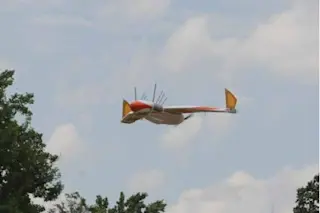The latest prototype of the Navy's duck-like drone. (Credit: United States Naval Research Laboratory) The United States Navy is incredibly interested in developing undersea robots and flying robots. So why not find a drone that can do both? That’s exactly what the Naval Research Laboratory’s Flimmer Program aims to do. Early prototypes of the Flimmer — a portmanteau of “flying swimmer” — have successfully been launched from a plane at 1,000 feet, splashed down on the water’s surface, then dove underwater reaching speeds of 11 miles per hour. Though the drone’s design still needs a lot of tweaking, it could someday be used to hunt enemy submarines from the air and sea. The biggest hurdle for Flimmer’s designers is that water is roughly 1,000 times denser than air. Weight is the enemy of a flying drone, as heavier aircraft require more lift to stay airborne. Underwater craft, on the other ...
The Navy Is Designing a Drone That Flies and Swims
Discover the Navy's innovative duck-like drone, part of the Flimmer Program, blending air and water capabilities.
More on Discover
Stay Curious
SubscribeTo The Magazine
Save up to 40% off the cover price when you subscribe to Discover magazine.
Subscribe













